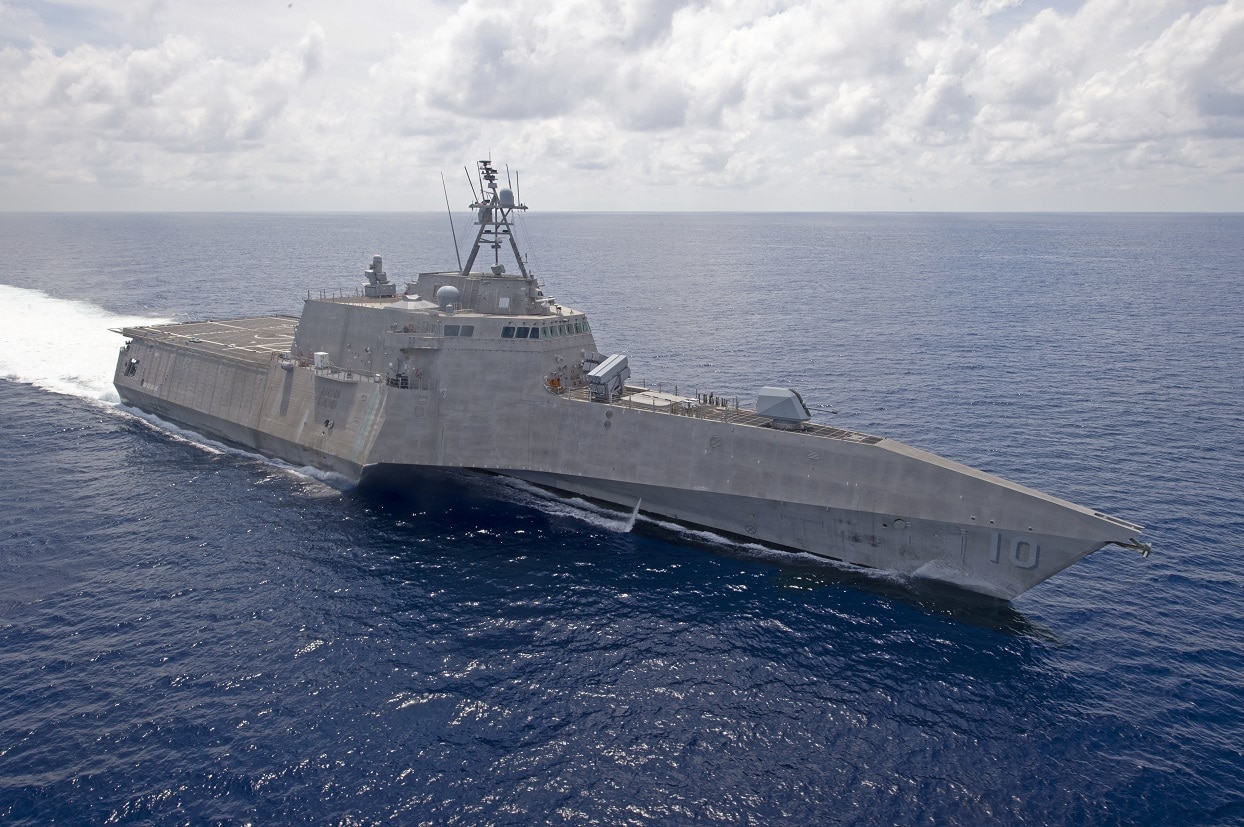We have a new naval reality, not just because the sea has changed but also because the balance of maritime power has changed. The US Navy faces a challenger unlike any since the destruction of the Imperial Japanese Navy in 1944.
The seminal works on the political and strategic importance of seapower were written more than a hundred years ago.While doctrine and strategic thinking have developed in important ways since World War I, the most important thinkers in the maritime domain canon remain Alfred Thayer Mahan and Julian Corbett. While Mahan and Corbett are sometimes taught as antagonists, their work is better regarded as complementary than contradictory. Corbett and Mahan remain relevant, but for seventy years structural factors made their prescriptions less obviously relevant to naval analysts.
Naval strategy of the Cold War did not envision a clash of fleets on the high seas or even at the narrow points, in no small part because the Soviet Navy never had the capacity to challenge the combined forces of the NATO alliance. Even at the peak of its power, the Soviet Navy was not interested in a confrontation with NATO. Rather, it focused on the one hand on defensive strategy in the Arctic designed to protect the USSR’s sea-based nuclear deterrent, and on the other on a limited submarine and air-based offensive into the North Sea designed to put the trans-Atlantic pipeline under risk.
US naval strategists wanted to use the preponderant naval advantage they held over their Soviet counterparts to some effect, though, and contemplated a variety of ways that naval forces could affect the course of the overall battle, including amphibious assaults, long-range missile strikes, and attacks into the patrol areas of Soviet boomers. Critically, however, neither the Soviets nor Americans believed that seapower would play a decisive role. The war would be won either on the plains of Central Europe or with strategic nuclear weapons. Seapower could affect the outcome, and a devastating defeat at sea could prove fatal for NATO, but the US could destroy the entire Soviet fleet and still lose the war.
Post-Cold War strategy built on the idea that effects on land should provide the measure for the usefulness of seapower, doubling down on the importance of an amphibious warfare capability, presence in the littoral, and the capacity of sea-launched air and missile strikes to inflict damage on land infrastructure and military forces. This way of thinking was productive but also constraining; maritime platforms were geared around support of land and air forces, often to their detriment as naval warships.
The Wars on Terror introduced a new angle, as the Navy needed to figure out a way to contribute to a series of wars against foes who had no ships to speak of. Naval strategy adopted a kind of thinking long familiar to the maritime sphere, putting terrorists in a conceptual space similar to that of pirates (who incidentally had also made a reappearance in the early 2000s). The idea of terrorists and rogues “hostile to all humankind” enabled the Navy to think about seapower as a cooperative endeavor, exemplified in the “1000 Ship Navy” idea that ships of other navies, and in some cases even of competitors, were a positive in the management of the maritime commons.
But now things have changed. The United States does not need to wage an asymmetric campaign to keep sea lanes open or commit to amphibious assaults in order to distract the attention of a rampaging Red Army. It does not need to concentrate its efforts on delivering missiles and special operators against the staging grounds of terrorists. Rather, it needs to prepare to defeat the navy of a peer competitor, most likely on terrain that favors the enemy and at a time of the enemy’s choosing. This is an immense task, and one that the military and political classes of the United States have yet to fully think through or prepare for.
If there’s a war, one of the United States Navy or the People’s Liberation Army Navy could lose this war, and lose it badly. More importantly, losing the naval war would mean losing the overall war, which could have devastating long-term effects on national security. A catastrophic defeat for the US Navy could take decades to recover from, given the slow pace of American shipbuilding. On the other hand, the United States could utterly destroy the PLAN, potentially leading to a situation in which the CCP’s regime would face a political revolution.
Seapower has once again become the decisive pivot upon which great power military competition will turn.
Now a 1945 Contributing Editor, Dr. Robert Farley is a Senior Lecturer at the Patterson School at the University of Kentucky. Dr. Farley is the author of Grounded: The Case for Abolishing the United States Air Force (University Press of Kentucky, 2014), the Battleship Book (Wildside, 2016), and Patents for Power: Intellectual Property Law and the Diffusion of Military Technology (University of Chicago, 2020).

